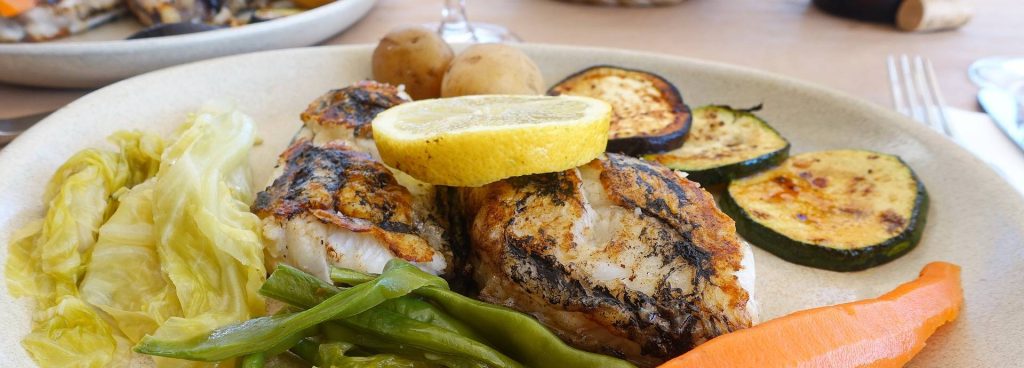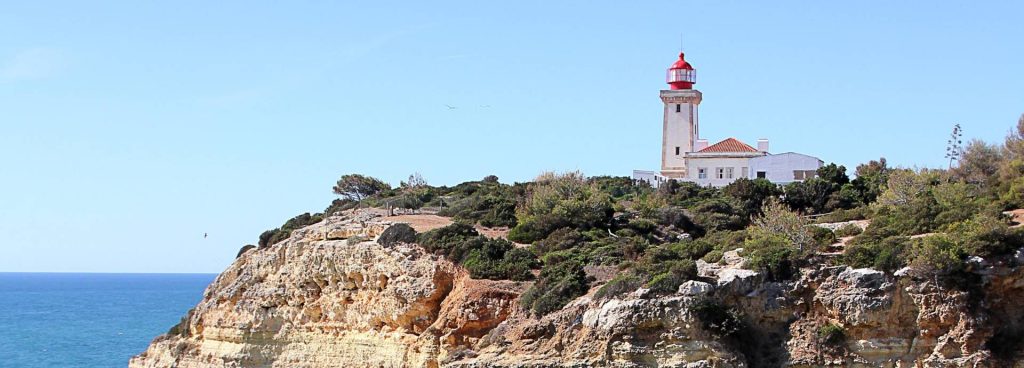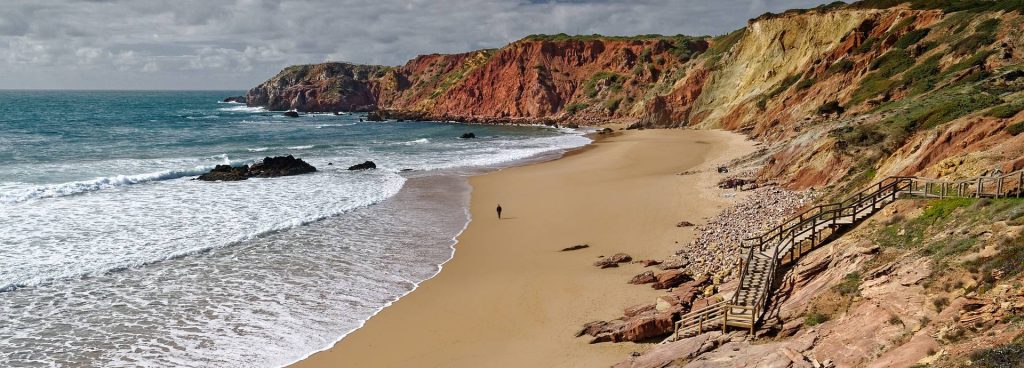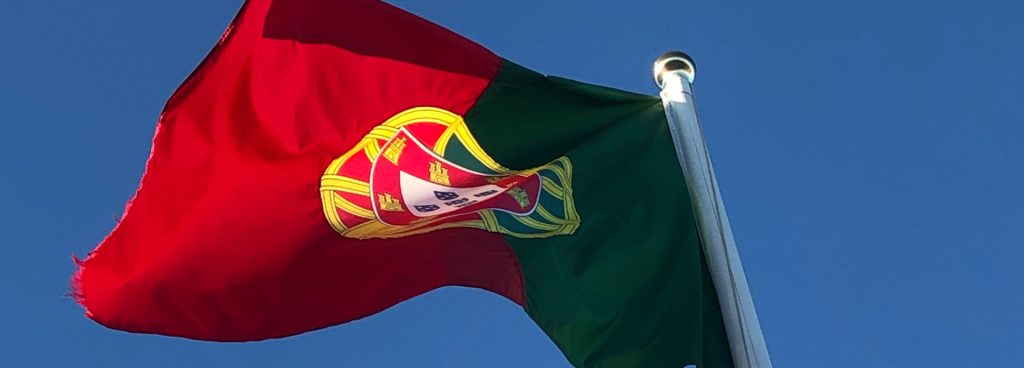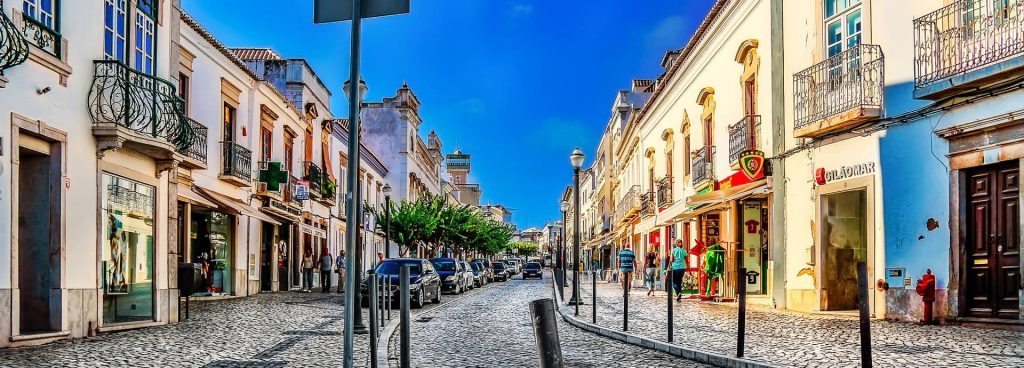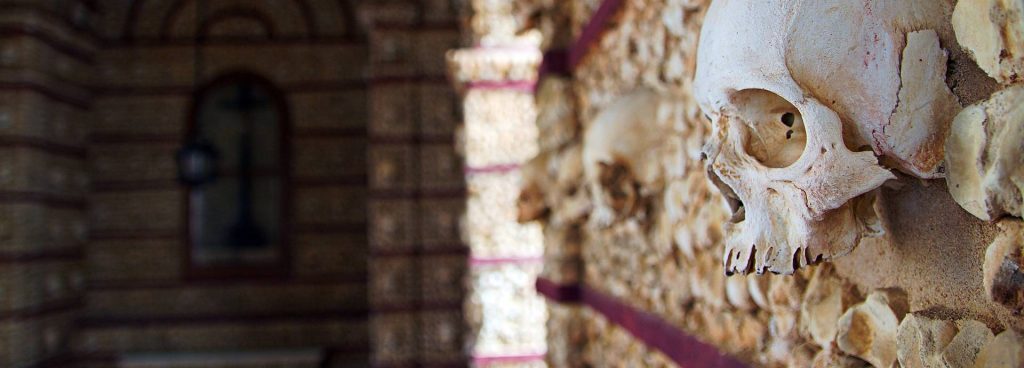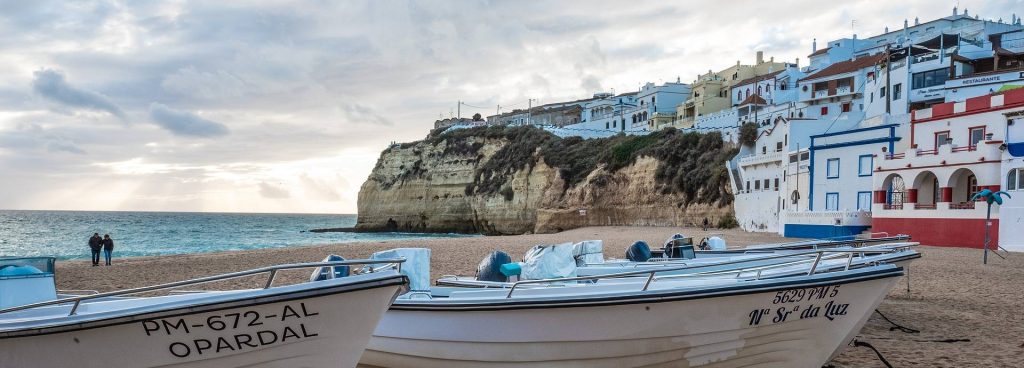History about Portugal and the Algarve
The roots of civilization in southern Portugal go back to prehistoric times. The people who lived here in the early days went hunting, caught fish, and gathered mussels and wild fruits, nuts and berries. They made their tools out of stone and bone. During the Neolithic, the population already had more advanced skills. They had wandered west, along the shores of the Mediterranean. The residents built houses, reclaimed the soil, kept house and livestock, made clay pots and worked copper.
In the 7th and 6th centuries BC, the Iberians were "infiltrated" and ruled by Celtic peoples who had come from beyond the Pyrenees. Around the same time, the Phoenicians came from the other end of the Mediterranean. They established trading posts on the Andalusian and Algarvian coasts. They were followed in the 6th century BC. Greek merchants, followed by the Carthaginians only a few decades later.
When numerous populations came and went, they left little evidence of their culture. This cannot be said of the next wave of immigration that rolled in from the east: In the early second century BC, Roman legions advanced on the Iberian Peninsula. Anyone who opposed them was gutted. The Lusitans, who lived in central Portugal at that time, were probably the most dangerous opponents of the Romans and defended themselves long and desperately on the borders of their country. Finally, after the death of the most important Lusitan military leader, Viriathus, the "Hannibal the Iberian", began in 137 BC. The Romanization of central Portugal.
Until the invasion of the Germanic peoples in the 5th century AD, the Roman influence on the history and culture of the country was great throughout Portugal. The Romans built cities and connected them with roads. For example, one of the streets led from Ossonoba (Faro) to Olissipo (Lisbon). Remains of Roman buildings and works of art have been preserved to this day.
While there is hardly any evidence of the Visigoths and other so-called “barbaric” invaders of their stay in the south of Portugal, the traces of the Moors who eventually ousted them are all the more present. The Moors - Muslim Arabs and Berbers from North Africa - came to the Algarve in the 8th century and quickly conquered all of Portugal. But in the Algarve their rule lasted the longest - more than 500 years - here their cultural influence was greatest. The name “Algarve” is also derived from the Arabic “Al Gharb”, which means “land in the west”.
In the 12th century the country separated from the neighboring Spanish kingdom of León - Portugal became an independent state. This happened at the time of the Christian "Reconquista", the reconquest of the Iberian Peninsula was carried out with the help of crusaders from the north of Europe. Ultimately, the Moors were removed from their bases in the Algarve in 1253 by Alfonso III. expelled. He was named "King of Portugal and the Algarve", a designation that reflects the Algarvios' distinct identity. This view has survived to this day, albeit in a somewhat moderate form. King Dionysus of Portugal, also known as Dom Dinis, finally established the Portuguese borders with Castile in 1297. This made Portugal sovereign and the Algarve a Portuguese province.
Many expeditions of the late 15th century that are now considered to be historically important began in the west of the Algarve. And many Algarvios were there as seafarers when the new lands were discovered and conquered. Merchants and colonizers followed closely.
In the 16th century Portugal had become a superpower that was disproportionate to the minimal size of the motherland. This time was Portugal's "golden era" in which the Algarve also played an important role.
In the third quarter of the 16th century the tide turned and again the Algarve played a role: King Sebastião, who loved the Algarve very much, was probably personally responsible for the decline of Portugal as a great power. Size, independence, world power and the wealth of Portugal - it all came to a quick end in 1578:
At the age of 24, Sebastião sailed from the Algarve to Africa with more than 23.000 men. During the battle against the Saadites, the king and 8.000 of his followers were killed in the battle of Alcacer-Quibir. The rest of the hopelessly inferior force was captured. Sebastião's death meant that the Portuguese crown fell to his great-uncle Henrique, a cardinal and also an unmarried old man.
After his death, the Spaniards registered their rights. It was Philip II of Spain who backed up his claim to the vacant Portuguese throne with an invasion of the neighboring country in 1580. As Philip I, the Cortes (assemblies of estates) proclaimed him King of Portugal. For the Portuguese, however, a period of humiliation began: they suffered for 60 years under Spanish rule and were drawn into the Spanish wars against England, Holland and France.
After a successful Portuguese revolt against Spain, its leader, the Duke of Bragança, was crowned king in 1640. He secured the country's independence again and managed to regain some of the previous possessions, including Brazil.
In the 18th century a brilliant epoch in Portuguese history began again. The diamonds mined in Brazil and the mining of huge amounts of gold allowed the Portuguese to lead a lavish lifestyle. Art, literature and science were cultivated, agriculture and domestic industry were encouraged in their development and magnificent buildings were built everywhere.
In 1755 in the Algarve (and also in other parts of Portugal) many of these structures were destroyed or at least severely damaged in a major earthquake. Lisbon was also devastated by the quake. The worst quake in Europe in living memory is said to have killed 60.000 Portuguese.
Half a century later, the country was devastated again by the French invasion during the Napoleonic Wars. The French, who occupied Portugal in 1807, were driven out by British troops under General Arthur Wellesley, later Duke Wellington, in 1811.
The French Revolution was followed by a revolution in Portugal from 1832 to 1834 - a problematic period, which, however, was only a prelude to another 100 years of political, social and economic upheaval. After the Portuguese king and his heir to the throne Ludwig Philipp were assassinated in 1908, the republic was proclaimed on October 5, 1910. But even that was no cure for the ailing country. On the contrary: between 1910 and 1926 there was an average of one coup d'état per year and three changes of government. In 1926 there was finally a military coup.
Against this chaotic background, António de Oliveira Salazar, a law professor, was asked by the military dictatorship in 1928 to take over the post of government finance minister. He apparently filled this post so convincingly that he was promoted to Prime Minister in 1952. From then until his death in 1968, Salazar was the dominant figure in an extremely right-wing, authoritarian, one-party state.
In the meantime Portugal had fought on the side of the Allies in World War I. The country's rulers had supported General Franco during the Spanish Civil War, but the country had remained officially neutral. This also applied to the Second World War. However, the Portuguese still allowed the British to use military facilities in the Azores. Lisbon was one of the escape points of German emigrants during the Nazi era. On the other hand, the Portuguese helped the German military to the best of their ability in their own country.
In the 1960s, Portugal became increasingly involved in wars. There were wars in which the peoples of Portugal tried to free themselves from colonial rule in the African possessions of Guinea-Bissau, Angola and Mozambique. These Guerrilha Wars lasted for 13 years and were finally ended by a military coup in the mother country: On April 25, 1974, what was probably the most important historical event in recent Portuguese history took place. Army and militia units occupied the most important buildings in central Lisbon, overthrowing the government of Salazar's successor, Marcelo Caetano. The coup was commanded by young officers, mostly captains of the army. They wanted to end the dictatorship, the senseless wars in Africa and Portuguese colonialism immediately. On their program was the establishment of a parliamentary democracy with freedom of speech and press, with the right to strike and assembly and all the other achievements of Western democracies. It was a popular, popular, bloodless coup which was nicknamed the “Carnation Revolution”. This symbol, the red carnations in the gun barrels, was noticed all over the world. The transition from almost half a century of totalitarian, radical right-wing dictatorship to a stable democracy was a very turbulent time for Portugal.
Two moderate parties, the center-left Socialists and the center-right Social Democrats, turned out to be the strongest parties in Portugal. A certain stability was achieved that people had long missed.
The Barcelos rooster - a peculiarity of Portugal
Popular souvenirs and available almost everywhere in the country are the strikingly brightly painted taps, which can be found in all sizes and designs. In an upright position, the "Roosters with a Heart" all appear good-natured and do not signal any lust for battle, as would be the case with South American roosters.
One hardly suspects that these "galos" are linked to a historical event, around which there are stories, the core of which is always the same. The traces lead to the Barcelos (in the north of Portugal) of the 14th century, where it all began with a pilgrim: He was on his way to Santiago de Compostela, Spain, the Mecca of devout Christians on the Iberian Peninsula. In Barcelos, however, the stars were unfavorable for him. When the pious man wanted to continue his pilgrimage, he was arrested because he was accused of theft.
Since he could not prove his innocence, the court sentenced him to death on the gallows. But he lodged an objection. Once more he was brought before the judge, who was about to enjoy a roast chicken.
In desperation, the pilgrim turned to Saint James of Santiago as the last hope and asked him from the bottom of his heart to revive the roasted rooster on the judge's plate as proof of his innocence.
And how could it be otherwise: His request was heard. As a thank you, the pilgrim, who has now been released, had a wayside cross erected (Padrão do Senhor do Galo), which can now be seen in the ceramics museum in Barcelos next to an impressive collection of roosters.
Even if you doubt the history, such a "Rooster of Barcelos" is always a nice souvenir of your vacation.

